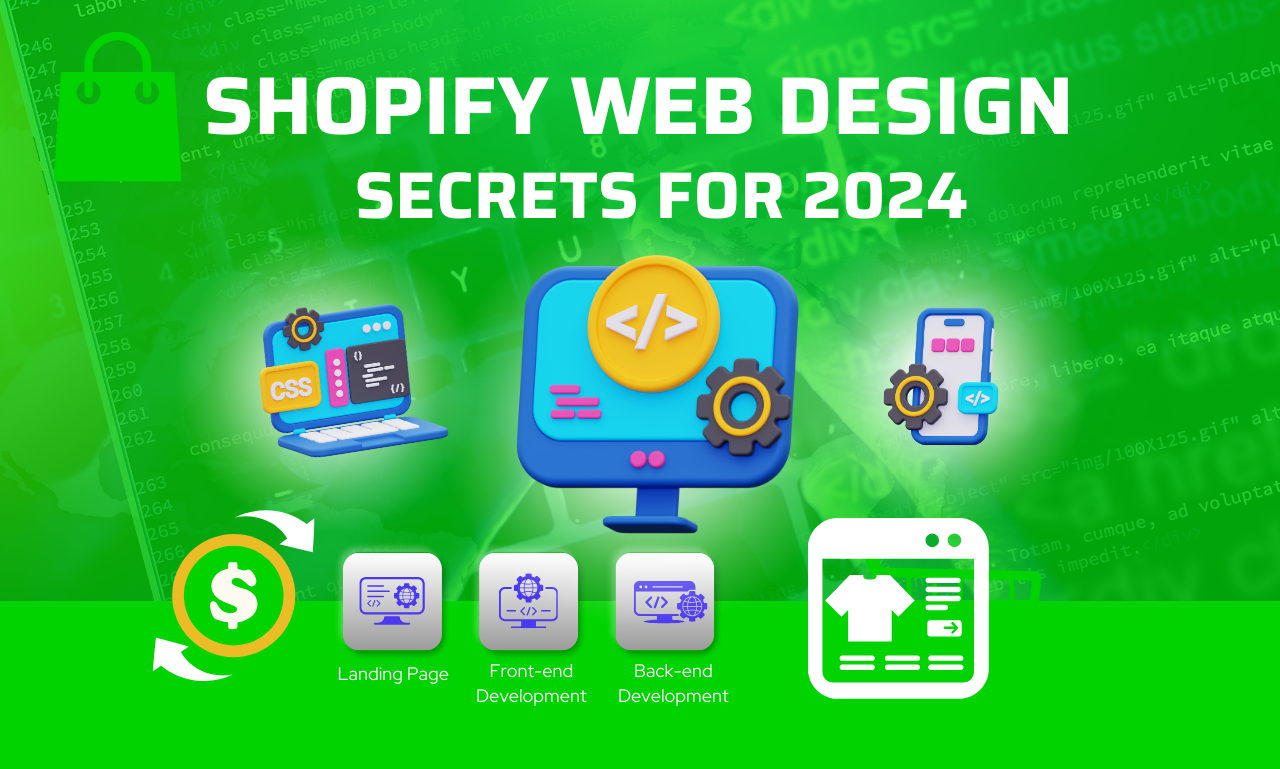
In 2024, the landscape of ecommerce continues to evolve, with Shopify remaining a powerhouse for entrepreneurs aiming to establish and grow their online presence. Crafting a compelling Shopify web design strategy is not just about aesthetics; it’s about creating an immersive user experience that converts visitors into loyal customers. Here, we uncover the top Shopify web design secrets that will elevate your brand and drive sales.
1. Mobile-First Design: Optimizing for the Mobile Experience
In the digital age, mobile responsiveness is non-negotiable. With a significant portion of ecommerce traffic originating from mobile devices, designing your Shopify store with a mobile-first approach ensures that every element—from navigation menus to product displays—is optimized for smaller screens. This not only improves user experience but also boosts your site’s SEO ranking, as Google prioritizes mobile-friendly websites.
2. Speed Optimization: Enhancing Performance
The speed at which your Shopify store loads can make or break a sale. Customers expect seamless browsing experiences, and delays can lead to high bounce rates and lost sales opportunities. Implementing speed optimization techniques such as image compression, minifying CSS and JavaScript files, and leveraging Shopify apps designed for performance can significantly enhance loading times, thereby improving user satisfaction by getting sales on Shopify and search engine rankings.
3. Intuitive Navigation: Simplifying the User Journey
A well-structured navigation system is essential for guiding visitors through your Shopify store effortlessly. Utilize clear categories and subcategories that align with your product offerings, ensuring that customers can find what they’re looking for with minimal effort. Incorporating a search bar with predictive text can further enhance usability, providing a seamless browsing experience that encourages exploration and purchase.
4. Visual Storytelling: Engaging Through Imagery
Images and visuals play a crucial role in capturing the attention of online shoppers. Invest in high-quality product photography and lifestyle images that not only showcase your products but also evoke emotion and convey your brand’s story. Use bold and descriptive alt text for images to improve accessibility and provide context for search engines, thereby enhancing your store’s visibility in image search results.
5. Customization Options: Personalizing the Shopping Experience
Today’s consumers crave personalized experiences. Implement customization features on your Shopify store, such as product configurators or personalized recommendations based on previous purchases or browsing behavior. By tailoring the shopping experience to individual preferences, you can increase engagement, foster customer loyalty, and ultimately drive higher conversion rates.
6. SEO-Friendly Practices: Optimizing Content for Search Engines
Optimizing your Shopify store for search engines goes beyond keywords. Craft compelling product descriptions that are not only informative but also incorporate relevant keywords naturally. Use SEO apps and best Shopify themes to analyze and improve your meta titles and descriptions, ensure proper use of header tags (like this one), and regularly update your content to reflect current trends and customer needs.
7. Social Proof: Building Trust and Credibility
In the competitive ecommerce landscape, social proof can be a powerful tool for building trust with potential customers. Incorporate customer reviews, testimonials, and user-generated content prominently on your Shopify store. Encourage satisfied customers to share their experiences on social media. Furthermore, amplifying your brand’s credibility and attracting new visitors through word-of-mouth marketing.
8. Integration with Marketing Tools: Automating and Scaling
Streamline your marketing efforts by integrating Shopify with marketing automation tools. From email marketing to abandoned cart recovery, automation can help you nurture leads and recover lost sales efficiently. Leverage data insights from Shopify analytics and marketing platforms to refine your strategies and optimize campaigns for better ROI.
9. Security Measures: Protecting Customer Data
With cybersecurity threats on the rise, prioritize security measures to safeguard customer data and earn their trust. Ensure that your Shopify store is SSL certified and PCI compliant. Display trust badges prominently during checkout to reassure customers that their information is safe. Implementing robust security protocols not only protects your brand reputation but also enhances customer confidence and satisfaction.
10. Continuous Optimization: Evolving with the Market
The ecommerce landscape is dynamic, with consumer preferences and technological advancements constantly evolving. Commit to continuous optimization of your Shopify store by staying updated with industry trends, monitoring analytics, and gathering customer feedback. Regularly test and iterate on design elements, features, and advanced digital marketing strategies to stay ahead of the competition and deliver exceptional user experiences.
Conclusion
Mastering the art of Shopify web design in 2024 requires a blend of creativity, technical expertise, and a deep understanding of consumer behavior. By implementing these top Shopify web design secrets—from mobile-first optimization to personalized user experiences. You can not only boost your brand’s visibility and conversion rates but also establish a strong foundation for long-term ecommerce success. Embrace innovation, prioritize user-centric design, and continuously refine your strategies to stay ahead in the competitive digital marketplace.